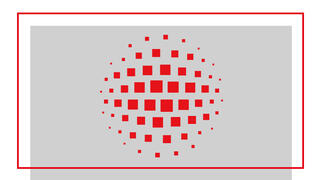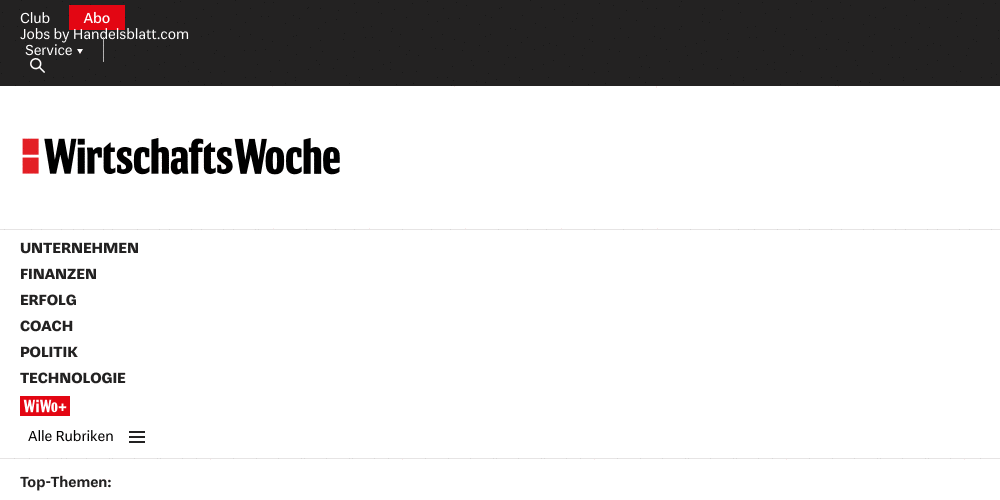
The ECB Shadow Council supports an extension of the central bank’s asset-purchasing program for another six months beyond March at the current rate. Most members said the euro zone economy is improving slowly but steadily, but expressed concerns about heightened political risks that represented a real risk to the future of the currency bloc.
Growth forecast revised slightly upwards
Compared to three months ago, the average forecast for inflation has been revised slightly downwards from 0.3 percent to 0.2 percent this year, in line with the ECB’s staff projection from September. For 2017, the forecast remains at 1.3 percent, close to the ECB’s projection from September of 1.2 percent. The Shadow Council’s mean forecast for 2018 is 1.4 percent.
The Shadow Council’s mean forecast for GDP growth for 2016 has been revised upwards by 0.1 percentage points for this year and next year respectively to 1.6 for 2016 and 1.4 for 2017. For 2018 the forecast is 1.4 percent.
Shadow Council macroeconomic forecasts (ECB’s September projections in brackets) | ||
| HICP-Inflation | GDP-Growth | |
| 2016 | 0.2 (0.2) | 1.6 (1.7) |
| 2017 | 1.3 (1.2) | 1.4 (1.6) |
| 2018 | 1.4 (1.6) | 1.4 (1.6) |
| Contributors: M. Annunziata; E. Bartsch; A. Bosomworth; S. Broyer; W. Buiter; J. Callow; J. Henry, J. Krämer. | ||
Steady as She Goes
All but two of the participating members of the Shadow Council called on the European Central Bank to continue its monthly asset purchasing program (APP) beyond the March deadline, arguing that to stop now would severely damage the ECB’s credibility. Most members called for a six-month extension at the current rate of €80 billion per month, while one member called for a nine-month extension at a monthly rate of €60 billion. Two members called for an extension but with the amount to be reduced by €10 billion each month – a tapering effectively – as the risks of continued easing have begun to outweigh the benefits. One member called for an immediate halt to long-term purchases and raising the main refinancing rate by 50 basis points. One member called for a cut in the deposit rate to -50 basis points and refinancing rate to -25 basis points to be coupled with a tapering of bond purchases starting in April 2017.
Some members suggested that asset purchases should be extended in light of increasing political risks, which have led to an increase in euro zone bond yields in the past few weeks, though all members acknowledged the ECB would never specifically acknowledge politics as a motive.
One member called for the ECB to create a separate reserve facility with a 0 percent deposit rate that would allow banks to establish legally ring-fenced safe deposits for cash and cash-like transactions, backed 100 percent by the ECB’s new reserve facility and a portfolio of government bonds determined by the ECB’s existing capital weighting. Remaining non-safe deposits would essentially become financial instruments under the proposal.
One member called for the ECB to steepen the yield curve in order to prevent further bank closures and mergers, and incentivize banks to increase bank credit creation. With the current term structure of interest rates, the banking business is not profitable enough for the majority of European banks (namely the small community banks that has been lending mainly to productive SMEs, the majority of which is found in Germany). By steepening the yield curve and switching the monetary policy focus to growth targets for bank credit creation to transactions contributing to GDP (‘credit for the real economy’), the ECB can achieve stable and sustainable growth across the Eurozone, while avoiding further stress in the banking system.
Change the APP Parameters
Most members of the Shadow Council called for tweaks to the ECB’s technical parameters to allow a smooth extension of the asset-purchase program, though some suggested rising bond yields had removed that necessity for the time being. Of those in favor of tweaks, views were more mixed on exactly which parameters to adjust. Some members called for relaxing the deposit facility floor for bond buying. Others called for raising the 33 percent issue limit to 40 percent or even 50 percent in some countries with a scarcity of bonds, while others called for mild temporary adjustments to bond-buying quotas under the capital key, which dictates how many bonds can be bought in each country. A number of members pointed out that the ECB does not have to buy to the maximum of its quotas according to the capital key – something that could allow for temporary deviations that could add more flexibility. One member suggesting scaling up non-governmental debt purchases in countries like Germany where government bonds have become scarce.
Political Risks Increasing
The rise of populist movements across Europe pose a growing and serious threat to the future of the euro zone and European Union, many Shadow Council members warned, with a small minority arguing that the death of the single currency area is now merely a question of time.
Shadow Council members did not recommend specific immediate adjustments to monetary policy in the face of Italy’s referendum or in response to the election of Donald Trump in the United States, though a few members said an extension of the asset-purchasing plan would provide a measure of stability in an uncertain political environment. One member noted that Donald Trump’s election has been positive for the ECB in light of the strengthening dollar.
Several members expressed concerns that the risks of speculation against an individual member state exiting the euro, or a wider euro-zone break-up, have grown stronger in the past months and will continue to grow in the near and medium term. One member said referendums such as Italy’s were “another nail in the coffin” of EMU, but others expressed confidence that a political compromise – however imperfect – would likely continue to be found to keep the euro zone alive.
Don’t Forget the OMT
With political risks in the European Union and its member states increasing, a number of members did raise the possibility of the European Central Bank implementing its dormant Outright Monetary Transactions program. This was widely considered a possible last resort backstop in the face of growing political risks to specific euro zone members and to the European Union as a whole, and all members still considered OMT unlikely to actually be triggered.
One member noted that the ECB’s asset-purchasing plan already amounts to a backdoor mutualization of debts and the implementation of Mario Draghi’s “whatever it takes” promise by preventing an increase in sovereign risk spreads of peripheral nations.
| Member | Affiliation | Fixed rate | Deposit rate | QE |
| José Alzola | The Observatory Group | Unchanged | Unchanged | + 6 months/ 80 Bn. |
| Marco Annunziata | General Electric | Unchanged | Unchanged | + 6 months/ 80 Bn. |
| Elga Bartsch | Morgan Stanley | Unchanged | Unchanged | + 6 months/ 80 Bn. |
| Andrew Bosomworth | Pimco | Unchanged | Unchanged | + 6 months/ 80 Bn. |
| Sylvain Broyer | Natixis | Unchanged | Unchanged | + 6 months/ 80 Bn. |
| Willem Buiter | Citigroup | -0.25 | -0.1 | + 8 months/ - 10 Bn. each month from March |
| Jacques Cailloux | Rokos Capital | Unchanged | Unchanged | + 6 months/ 80 Bn. |
| Julian Callow | Element Capital | Unchanged | Unchanged | + 9 months/60 Bn. |
| Janet Henry | HSBC | Unchanged | Unchanged | + 6 months/ 80 Bn. |
| Merijn Knibbe | Wageningen University | Unchanged | Unchanged | + 9 months/80 Bn. |
| Fabian Lindner | IMK | Unchanged | Unchanged | + 6 months/ 80 Bn. |
| Jörg Krämer | Commerzbank | +0.25 | +0.25 | + 8 months/ - 10 Bn. each month from March |
| Thomas Mayer | Flossbach von Storch | |||
| Lucrezia Reichlin | London Busines School | Unchanged | Unchanged | |
| Richard Werner | University Southampton | +0.5 | +0,2 | - 80 Bn. |
Frankfurt, 3rd December, 2016
Jan Mallien and Christopher Cermak
Background information
The ECB Shadow Council was founded in 2002 upon an initiative of Handelsblatt, the German business and financial daily. It is an unofficial panel, independent of the ECB/Eurosystem, and comprising fifteen prominent European economists drawn from academia, financial institutions, consultancies, companies and research institutes.
The Shadow Council usually convenes by telephone conference on a quarterly basis. Its discussions are intended to formulate an opinion as to what monetary policy decision its members believe that the ECB's Governing Council ought to undertake, both at its forthcoming meeting and also on a three month horizon. Shadow Council members are encouraged to submit their own economic projections for euro area activity and inflation on a monthly basis, which constitutes the panel's forecast consensus as published each month.
The Shadow Council's discussions and recommendations differ from surveys of economists concerning the outlook for ECB interest rates because the Shadow Council recommendation expresses the majority view of its' members opinion about what the ECB should do, rather than what they forecast it to do (and hence the "normative" views as expressed by Shadow Council members on what they consider the ECB ought to do can and often do differ from what they might say they expect the ECB to do). This "normative perspective can, however, give an early indication of shifts in the balance of opinion in the expert community, as can be seen by comparing the historic recommendations of the Shadow Council against subsequent decisions undertaken by the ECB Governing Council.
Members of the Shadow Council base their recommendations on the ECB's objectives as defined under the EU Treaty, though Shadow Council members do not necessarily adopt exactly the ECB's specific interpretation of its mandate: most Shadow Council members consider that a medium term inflation objective of two percent with a symmetric tolerance band around it would be clearer, more realistic and more appropriate than the definition adopted by the Governing Council, which defines price stability as an inflation rate of "below, but close to, two percent", in the medium term.




















